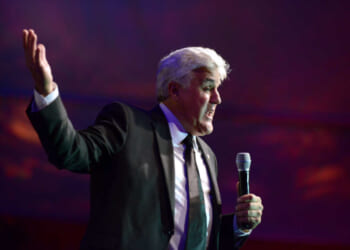I’ve been throwing punches and kicks for the better part of a decade now. Boxing, kickboxing, the usual rotation of compound movements in the gym — nothing revolutionary, just the steady accumulation of speed and skill that comes from consistent work. It’s meditative, really. The rhythm of training, the incremental progress, the quiet satisfaction of knowing your body can do what you ask of it.
But something curious has happened in recent years, something that crystallized when my fiancée asked me a question that stopped me cold: “Is this what men find attractive now?”
She was scrolling through Instagram, her feed flooded with images of women who looked less like athletes and more like anatomical studies. Delts that could slice fruit. Abs etched like marble. Veins snaking down forearms like wiring diagrams.
Women built to look like men, for men, in a culture that no longer knows what either is supposed to mean.
“It’s like a psyop,” she muttered. And she wasn’t wrong. There’s something eerily manufactured about it all. As if someone, somewhere, decided that this — a hyper-muscular, insanely jacked form — is what women should aspire to now. That femininity itself must be re-coded through the lens of male aesthetics: more angular, more vascular, more aggressive.
There’s a crucial distinction that’s been lost in our current cultural moment — the difference between being toned and being overly muscular. Tone suggests function, health, capability. It’s the natural result of a body that moves well through the world. But what we’re witnessing now is something else entirely.
Walk through any major city and you’ll see them — women whose physiques would’ve been considered overtly masculine, even jarring, just two decades ago. Square-jawed, thick-necked, arms like twisted rope.
But this isn’t some natural evolution. It’s not organic. It’s algorithmic. Fueled by platforms that reward extremes and bury everything else. The woman with a balanced, athletic build — the one who eats well, trains consistently, lives a healthy, sustainable life — vanishes into the feed. She doesn’t spike engagement. She doesn’t go viral. But the woman who looks like she could hoist a sedan over her head racks up likes, sponsorships, and ad revenue. She becomes a product. The incentive structure is brutally clear: normal isn’t profitable.
Men have lived with these pressures for generations: Be bigger, be harder, be impossible to ignore. It’s written into our evolutionary code, passed down through fathers, coaches, and brothers. The gym has long been a cathedral for men, the iron a sacrament we return to again and again in pursuit of size, power, and worth. (RELATED: Pumping Iron)
At some point, women entered that cathedral and started demanding their own share of that power. And why shouldn’t they? If muscle equals status, and status equals survival in modern culture, then chasing muscle is just economic logic. It’s cultural math. Women didn’t invent the equation. They’re just playing the game we built.
But the problem isn’t that women are getting stronger. Strength is good. Health is good. The problem is that they’re chasing an aesthetic that actively erodes what makes women attractive — both biologically and psychologically. And no, that isn’t some trad slogan dressed up as science. It’s just reality.
A man with the physique of an NFL quarterback, the kind of body that looks like it was built to absorb impact, is textbook male appeal. Evolution wrote that script. Women are drawn to it not because they’re brainwashed, but because it signals safety, dominance, and reliable genetics. It’s attraction wired in by centuries of survival. Now reverse it. Picture a woman with that same body. Not graceful. Not athletic and feminine. But full linebacker. The proportions of someone built to inflict damage. Most men recoil, not because they hate strength in women, but because every internal alarm tells them this isn’t what female strength is supposed to look like.
Yet this is what we’re supposed to be celebrating: women adopting the worst habits of male fitness culture — the obsession with hypertrophy, the cult of numbers, the idea that more mass equals more worth. They’ve inherited our most self-destructive traits and paraded them as liberation.
And many in America and beyond are clapping, calling it empowerment. But men and women aren’t the same. That’s not bigotry; it’s biology. And when one sex tries to mimic the shadow side of the other in the name of progress, what you get isn’t strength. It’s distortion.
Sexual attraction isn’t a social construct; it’s millions of years of programming that doesn’t care about your political opinions. Men are attracted to fertility signals: hip-to-waist ratios that suggest childbearing capacity, soft tissue that indicates adequate nutrition, and feminine features that signal genetic compatibility. Women built like Greek gods trigger the opposite response — confusion, discomfort, a deep biological unease that most men can’t articulate but definitely feel.
Again, this isn’t misogyny. It’s reality. The fitness industry has redefined this reality, convincing women that they can override millions of years of evolution with enough pull-ups and dietary discipline. That if they just get big enough, shredded enough, they’ll somehow transcend the basic biological templates that govern attraction. It’s like trying to convince water to flow uphill, theoretically possible with enough artificial intervention, but fundamentally working against nature.
The solution to combating the madness isn’t complicated, but it requires abandoning the lie that men and women are interchangeable, that what makes one sex attractive automatically applies to the other. Women can be appealing without looking like they’re preparing for a powerlifting competition. They can be fit without sacrificing everything that makes them feminine. (RELATED: Why Gen Z Is Giving Up on Sex, Love, and Each Other)
The most attractive women understand that their power doesn’t come from looking like men. It comes from being confidently, unapologetically feminine while possessing the physical capability to handle whatever life throws at them.
The iron doesn’t lie, but Instagram does. It lies about what men want, what strength looks like, and what empowerment means. Real strength knows when to stop. Real confidence doesn’t need to announce itself through excessive muscle mass. Real femininity is powerful precisely because it’s different from masculinity, not because it imitates it.
READ MORE from John Mac Ghlionn:
AI Won’t Terminate Us. It Will Just Render Us Irrelevant.
Soap, Sex, and Simulacra: Hollywood’s Latest Moment of Madness




![Man Arrested After Screaming at Senators During Big Beautiful Bill Debate [WATCH]](https://www.right2024.com/wp-content/uploads/2025/06/Man-Arrested-After-Screaming-at-Senators-During-Big-Beautiful-Bill-350x250.jpg)












